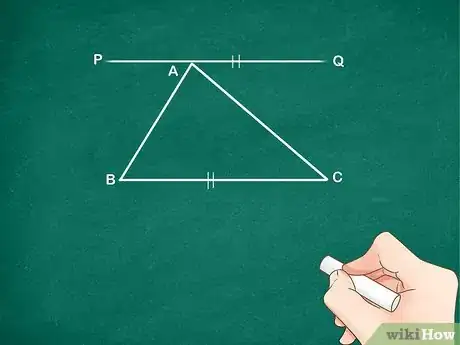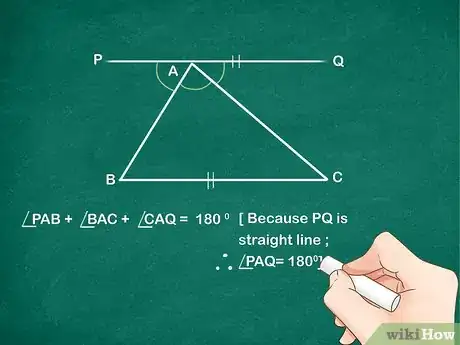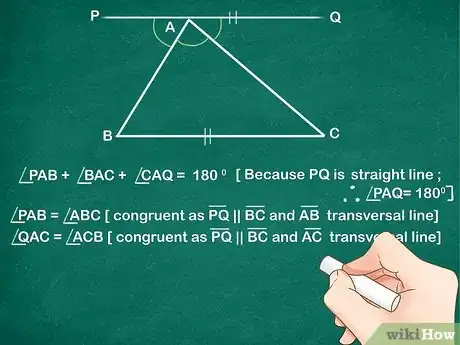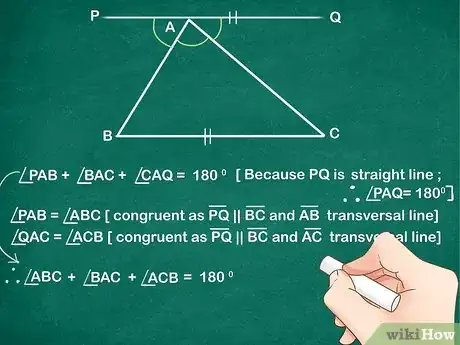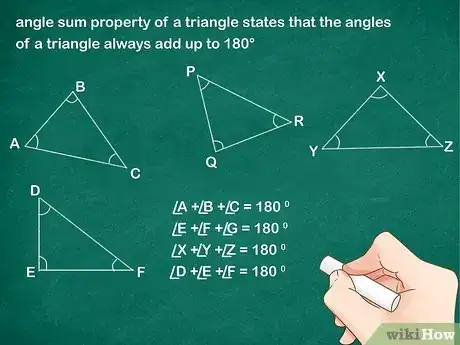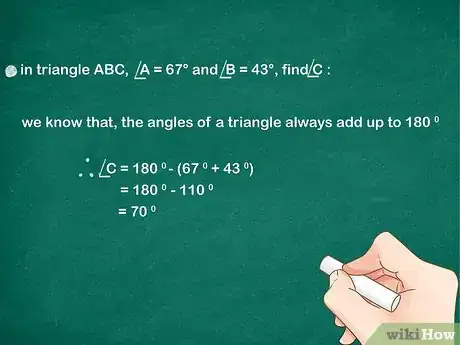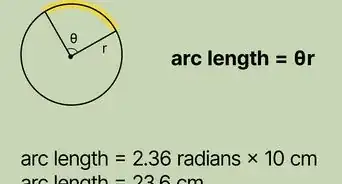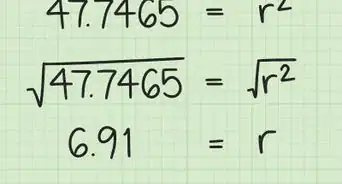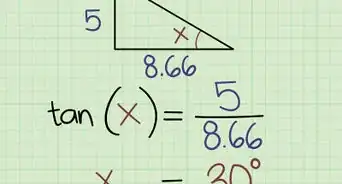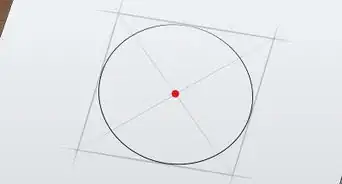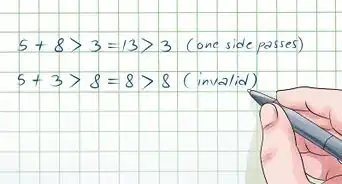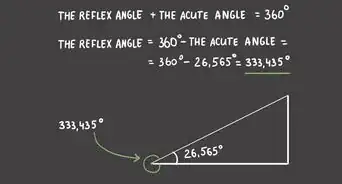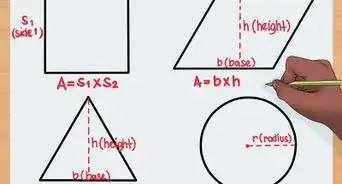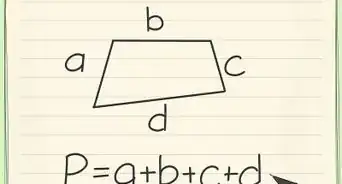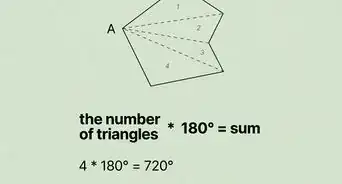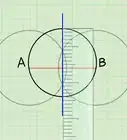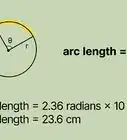This article was co-authored by wikiHow Staff. Our trained team of editors and researchers validate articles for accuracy and comprehensiveness. wikiHow's Content Management Team carefully monitors the work from our editorial staff to ensure that each article is backed by trusted research and meets our high quality standards.
This article has been viewed 185,494 times.
Learn more...
It is common knowledge that the sum of all the interior angles of a triangle equals 180°, but how do we know that? To prove that the sum of all angles of a triangle is 180 degrees, you need to understand some common geometric theorems. Using a few of these geometric concepts, there is a simple proof that can be written.
Steps
Proving the Angle Sum Property
-
1Draw a line parallel to side BC of the triangle that passes through the vertex A. Label the line PQ. Construct this line parallel to the bottom of the triangle.[1]
-
2Write the equation angle PAB + angle BAC + angle CAQ = 180 degrees. Remember, all of the angles that comprise a straight line must be equal to 180°. Because angle PAB, angle BAC, and angle CAQ combine together to make line PQ, their angles must sum to 180°. Call this Equation 1.[2]Advertisement
-
3State that angle PAB = angle ABC and angle CAQ = angle ACB. Because you constructed line PQ parallel to side BC of the triangle, the alternate interior angles (PAB and ABC) made by the transversal line (line AB) are congruent. Similarly, the alternate interior angles (CAQ and ACB) made by the transversal line AC are also congruent.[3]
- Equation 2: angle PAB = angle ABC
- Equation 3: angle CAQ = angle ACB
- It is a geometric theorem that alternate interior angles of parallel lines are congruent.[4]
-
4Substitute angle PAB and angle CAQ in Equation 1 for angle ABC and angle ACB (as found in Equation 2 and Equation 3) respectively. Knowing that the alternate interior angles are equal lets you substitute the angles of the triangle for the angles of the line.[5]
- Thus we get, Angle ABC + angle BAC + angle ACB = 180°.
- In other words, in the triangle ABC, angle B + angle A + angle C = 180°. Thus, the sum of all the angles of a triangle is 180°.
Understanding the Angle Sum Property
-
1Define the angle sum property. The angle sum property of a triangle states that the angles of a triangle always add up to 180°.[6] Every triangle has three angles and whether it is an acute, obtuse, or right triangle, the angles sum to 180°.
- For example, in triangle ABC, angle A + angle B + angle C = 180°.
- This theorem is useful for finding the measure of an unknown angle when you know the other two.
-
2Study examples. To really grasp this concept, it can be helpful to study some examples. Look at a right triangle, where one of the angles is 90° and the other angles each measure 45°. Summing 90° + 45° + 45° = 180°. Study other triangles of various shapes and sizes and sum their angles. You will see that they always add up to 180°.[7]
- For the right triangle example: angle A = 90°, angle B = 45°, and angle C = 45°. The theorem states that angle A + angle B + angle C = 180°. Adding the angles gives you 90° + 45° + 45° = 180°. Therefore, left hand side (L.H.S.) equals right hand side (R.H.S.).
-
3Use the theorem to solve for an unknown angle. Using simple algebra, you can use the angle sum theorem to solve for an unknown angle if you know the other two angles of the triangle. Rearrange the basic equation to solve for the unknown angle.
- For example, in triangle ABC, angle A = 67° and angle B = 43°, but angle C is unknown.
- angle A + angle B + angle C = 180°
- 67° + 43° + angle C = 180°
- angle C = 180° - 67° - 43°
- angle C = 70°
Community Q&A
-
QuestionHow do I prove this using alternative angles?
 Community AnswerTake a triangle ABC, and have a line parallel to BC passing through A. Now we have line DAE II BC. Therefore, Angle B = angle DAB (alternate angles) Angle C = angle EAC (alternate angles) DAE is a line, therefore angle DAB + A + EAC = 180 degrees But angle B = DAB and C = EAC Hence proven, Angle A + B + C = 180 degrees.
Community AnswerTake a triangle ABC, and have a line parallel to BC passing through A. Now we have line DAE II BC. Therefore, Angle B = angle DAB (alternate angles) Angle C = angle EAC (alternate angles) DAE is a line, therefore angle DAB + A + EAC = 180 degrees But angle B = DAB and C = EAC Hence proven, Angle A + B + C = 180 degrees. -
QuestionHow do I prove that angles of a quadrilateral equal 360?
 Community AnswerDraw your diagonals. Four triangles appear, forming 12 angles. We know that the sum of these angles is going to be 180 x 4, so 720°. The angles that join in the middle of the polygon form a whole angle, 360°. So the sum of the other angles, which equal the sum of the angles of the quadrilaterals is 720-360°. This demonstration shows that if you add a side to the polygon, you add a triangle, so 180° to the total, and the center stays 360°. Which gives you the formula for the sum of the angles based on the number of sides N: 180 x N - 360. which you can factor as 180 (N-2).
Community AnswerDraw your diagonals. Four triangles appear, forming 12 angles. We know that the sum of these angles is going to be 180 x 4, so 720°. The angles that join in the middle of the polygon form a whole angle, 360°. So the sum of the other angles, which equal the sum of the angles of the quadrilaterals is 720-360°. This demonstration shows that if you add a side to the polygon, you add a triangle, so 180° to the total, and the center stays 360°. Which gives you the formula for the sum of the angles based on the number of sides N: 180 x N - 360. which you can factor as 180 (N-2). -
QuestionHow can I prove also using the 'alternate opposite angle' method? (Sum of all angles of a triangle)
 Community AnswerYour exterior angle will be alternately and oppositely equal to the interior angle, since the lines between which the triangle lies in the proof diagram will be parallel. The sum of the angles touching the line with only one vertex will be 180, as they all lie on the same line. The alternate opposite exterior angles will be equal to the alternate opposite interior angle because of the alternate opposite interior angle . The exterior angle A would be equal to angle D, B to E and C to C. A + B + C =180 (all lie on the same line, 2 exterior 1 interior angle), A = D (alternately opposite interior angles), B = E (same reason). 4.C=C 5.therefore C + D + E=180 Hence proved
Community AnswerYour exterior angle will be alternately and oppositely equal to the interior angle, since the lines between which the triangle lies in the proof diagram will be parallel. The sum of the angles touching the line with only one vertex will be 180, as they all lie on the same line. The alternate opposite exterior angles will be equal to the alternate opposite interior angle because of the alternate opposite interior angle . The exterior angle A would be equal to angle D, B to E and C to C. A + B + C =180 (all lie on the same line, 2 exterior 1 interior angle), A = D (alternately opposite interior angles), B = E (same reason). 4.C=C 5.therefore C + D + E=180 Hence proved
References
- ↑ http://hotmath.com/hotmath_help/topics/angle-sum-theorem.html
- ↑ http://www.basic-mathematics.com/angle-sum-theorem.html
- ↑ http://www.basic-mathematics.com/angle-sum-theorem.html
- ↑ http://www.basic-mathematics.com/angle-sum-theorem.html
- ↑ http://hotmath.com/hotmath_help/topics/angle-sum-theorem.html
- ↑ http://www.algebraden.com/angle-sum-property-of-triangle.htm
- ↑ http://www.algebraden.com/angle-sum-property-of-triangle.htm
About This Article
To prove the angle sum property of a triangle, label the corners of the triangle with A, B, and C. Draw a line parallel to side BC that passes through the vertex A, and label the line PQ. Write the equation angle PAB + angle BAC + angle CAQ = 180°. Next, write that angle PAB is equal to angle ABC and angle CAQ equals angle ACB and substitute them in the original equation. This proves that the sum of all of the angles is 180°. To understand how to use this theorem to solve for an unknown angle, keep reading!
